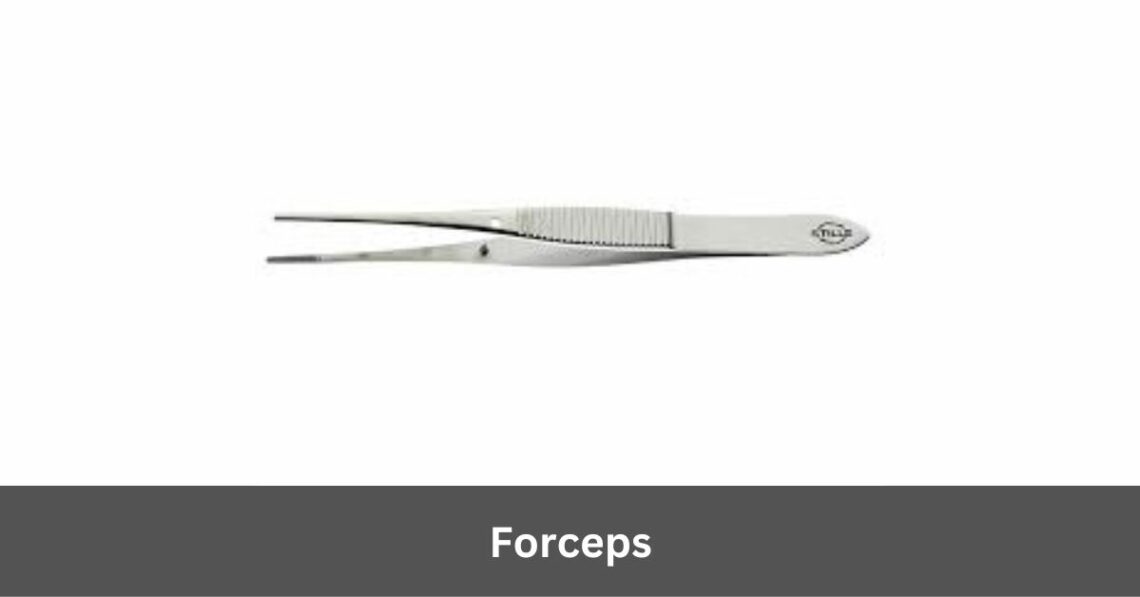
What is Forceps Delivery? Experts Guide!
Introduction:
Childbirth is a remarkable journey filled with anticipation and excitement, but sometimes it can encounter obstacles. Forceps delivery emerges as a valuable tool in the arsenal of obstetricians, offering a way to navigate challenges and facilitate the safe arrival of a baby when labor stalls or complications arise. In this comprehensive guide, we delve into the intricacies of forceps delivery, exploring its purpose, procedure, benefits, and potential risks.
Table of Contents
What is Forceps Delivery?
Forceps delivery stands as a beacon of assistance amidst the throes of labor. When vaginal delivery reaches a critical juncture but progress falters, forceps, resembling metal salad tongs, come into play.
Expertly wielded by trained healthcare providers, these instruments grasp the baby within the birth canal, guiding them to emerge into the world. Forceps delivery serves as a lifeline, offering an alternative to cesarean section and aiding in the safe passage of both mother and child.
Components of Forceps:
The forceps used in obstetrics are specialized medical instruments designed to assist in the delivery of a baby during childbirth. They consist of several key components, each serving a specific purpose in the delivery process. Here are the main components of obstetrical forceps:
1. Blades:
The blades are the most prominent part of the forceps and are the components that come into direct contact with the baby’s head during delivery. The blades are designed to gently grasp the sides of the baby’s head, providing traction to guide the baby through the birth canal.
2. Shanks:
The shanks are the elongated, curved handles that extend from the blades of the forceps. They provide the operator with a firm grip and leverage to maneuver the forceps during delivery. Shanks come in various lengths and angles to accommodate different obstetrical scenarios and maternal anatomies.
3. Handle:
The handle is the part of the forceps that the operator holds and manipulates during delivery. It provides a comfortable and ergonomic grip for the healthcare provider, allowing them to exert controlled force and direction while guiding the baby through the birth canal.
4. Cephalic Index:
The cephalic index refers to the angle or curvature of the blades relative to the shanks of the forceps. Forceps with a higher cephalic index have blades that curve more sharply, while those with a lower cephalic index have blades that curve less.
Material Composition:
Obstetrical forceps are typically made of high-quality stainless steel or other durable materials that can withstand the forces exerted during delivery. The material composition ensures that the forceps remain strong, rigid, and sterile throughout the delivery process, reducing the risk of breakage or contamination.
The Need for Forceps Delivery
Labor, though a natural process, may encounter roadblocks that necessitate intervention. Forceps delivery comes into play when the pushing stage of labor stalls, and conventional methods prove ineffective. It becomes a crucial option when the health of the mother or baby is at risk due to prolonged labor or signs of fetal distress. In such pivotal moments, forceps offer a path forward, enabling a vaginal delivery that might otherwise be elusive.
Distinguishing Forceps Delivery from Other Methods:
Forceps delivery shares the stage with vacuum extraction as a means of assisted vaginal delivery. While both techniques serve similar purposes, the choice between them often boils down to the expertise of the healthcare provider and the specific circumstances of the labor.
Forceps hold certain advantages over vacuum extraction, particularly in their ability to handle breech presentations and facilitate rotational maneuvers. Understanding these distinctions helps healthcare teams tailor their approach to each unique situation.
How Forceps Delivery Works:
The artistry of forceps delivery lies in its meticulous execution. As the birthing parent lies in position, with legs spread apart, the skilled hands of the delivery assistant carefully apply the forceps around the baby’s head or feet.
With each contraction, gentle traction is applied, synchronized with the mother’s pushing efforts, guiding the baby’s progression through the birth canal. The goal is precision and efficiency, ensuring a smooth and timely delivery.
Advantages of Forceps Delivery:
Forceps delivery offers several advantages in certain situations. These advantages include:
1. Faster Delivery:
Forceps delivery is often quicker than vacuum extraction, which can be crucial in situations where expedited delivery is necessary due to fetal distress or maternal health concerns. The ability to facilitate a prompt delivery can help reduce the risks associated with prolonged labor.
2. Reduced Need for Sequential Instrumentation:
In some cases, forceps may be preferred over vacuum extraction because they reduce the likelihood of needing sequential instrumentation. Sequential instrumentation refers to the use of one instrument followed by another if the first attempt is unsuccessful.
3. Maternal Satisfaction:
Some studies suggest that women who undergo forceps-assisted vaginal deliveries may experience greater satisfaction with their birth experiences compared to those who undergo cesarean sections.
4. Potential for Future Vaginal Deliveries:
Successful forceps delivery may preserve the integrity of the pelvic floor and reduce the likelihood of complications associated with cesarean sections, thereby increasing the chances of achieving spontaneous vaginal deliveries in future pregnancies.
5. Risks in Forceps Delivery:
Forceps delivery, like any medical intervention, carries certain risks and potential complications, both for the birthing parent and the baby. It’s essential for healthcare providers to thoroughly assess the risks versus benefits of forceps delivery in each case. Some of the risks associated with forceps delivery include:
6. Maternal Trauma:
Forceps delivery can increase the risk of trauma to the birthing parent, particularly to the birth canal and surrounding tissues. This may include vaginal tears, perineal lacerations, or damage to the muscles or walls of the rectum.
7. Postpartum Pain and Discomfort:
Mothers who undergo forceps-assisted deliveries may experience increased postpartum pain and discomfort compared to those who deliver without assistance. Recovery from perineal trauma or lacerations may take longer, requiring pain management and careful monitoring for signs of infection or other complications.
8. Urinary and Bowel Dysfunction:
Forceps delivery is associated with a higher risk of urinary incontinence or difficulty urinating in the postpartum period. Additionally, there may be an increased risk of bowel dysfunction or altered bowel habits following forceps-assisted delivery, especially in cases of severe perineal trauma.
9. Neonatal Trauma:
While forceps delivery aims to facilitate the safe delivery of the baby, it can also pose risks to the newborn. Potential neonatal complications include scalp lacerations or bruising due to pressure from the forceps blades. In rare cases, more severe injuries such as facial nerve palsy, skull fractures, or bleeding within the skull may occur.
Conclusion:
In the intricate tapestry of childbirth, forceps delivery emerges as a vital thread, offering hope and assistance when labor encounters obstacles. Its role as a facilitator of vaginal delivery, particularly in challenging circumstances, underscores its significance in modern obstetrics. While acknowledging the risks it entails, the benefits of forceps delivery are undeniable, guiding mothers and babies alike toward a safe and successful birth experience.
You May Also Like

Windows 11 Build 26100.1.240331-1435.ge_release_clientchina_oem_x64fre_zh-cn.iso: Everything You Need to Know!
January 29, 2025
Best crypto investment strategies – The Ultimate Guide!
May 6, 2024


Average Rating